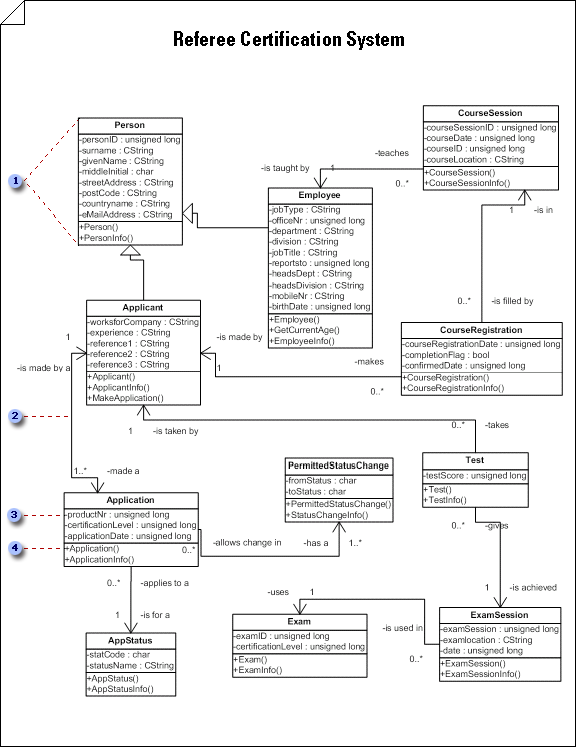About UML static structure diagrams
Conceptual static structure diagrams
A conceptual diagram is a static structure diagram that represents concepts from the real world and the relationships between them. It focuses on relationships and attributes rather than methods, and helps you understand the terminology in the domain area for which you are developing a system.
Class static structure diagrams
Like conceptual diagrams, class diagrams are static structure diagrams that decompose a software system into its parts. In a class diagram, however, the parts are classes that represent fully defined software entities rather than objects that represent real-world concepts.
In addition to attributes and associations, a class diagram also specifies operations, methods, interfaces, and dependencies.

 To add attributes, operations, and other properties to class shapes, double-click a shape to open the UML Class Properties dialog box.
To add attributes, operations, and other properties to class shapes, double-click a shape to open the UML Class Properties dialog box.
 Double-click an association to add adornments, such as multiplicity and navigability.
Double-click an association to add adornments, such as multiplicity and navigability.
 In addition to the name and type shown here, attributes can also include visibility, an initial value, and specify whether the scope is class or instance.
In addition to the name and type shown here, attributes can also include visibility, an initial value, and specify whether the scope is class or instance.
 Define the parameters of an operation fully in a diagram when you want to communicate detailed programming specifications.
Define the parameters of an operation fully in a diagram when you want to communicate detailed programming specifications.
No comments:
Post a Comment